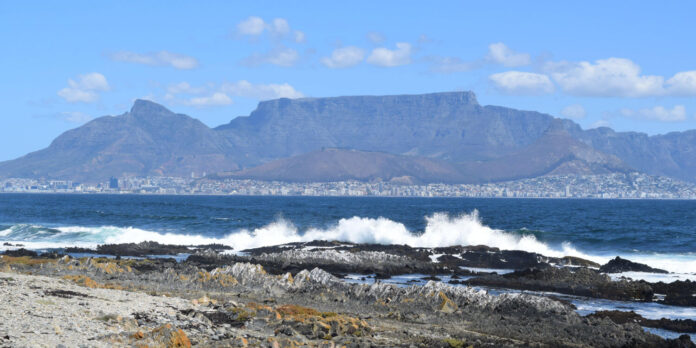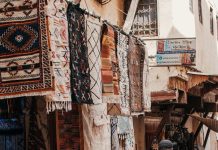Speaking at a halal tourism industry event, the leaders of the cities’ destination marketing organisations revealed their motivation to understand Muslim travellers better and the strategies to promote the towns as Muslim-friendly destinations.
Cape Town and New York City are accelerating their tourism recovery efforts by tapping into the Muslim traveller revenue potential that the Dinar Standard’s State of the Global Islamic Economy Report estimates will reach $189 billion in 2025.
Enver Duminy, Cape Town Tourism CEO, said questions reflecting who Cape Town is and what the city wants to represent, were crucial in founding a new tourism blueprint.
“Our heritage, the fabric of our city, our culture, that intertwined who we are today, is because it’s a strong Muslim presence in everything we do,” Duminy said.
The Dutch East India Company established Cape Town as a refuelling station en route to the Spice Route countries in 1652. These ships brought labourers from the Moluccas (Maluka Islands) and political prisoners from Indonesia, introducing Islam to the region.
However, the religion only took root in the early 1800s when enslaved Indian Muslims arrived.
Hailing from the Indonesian spice island Tidore, the religious teacher Tuan Guru established the Masjid ul-Awwal, South Africa’s first mosque, in 1794 and wrote out the Qur’an from memory while imprisoned on Robben Island.
Although Muslims account for a quarter of Cape Town’s 4.6 million-strong population, the city typically has been sold and portrayed as a European destination in Africa.
“If we haven’t been speaking to (the Muslim) audience, that’s on us,” Duminy said, alluding to missed opportunities.
He states 30% of the world’s Muslim population resides in North Africa and, as an initial step to tapping into the halal tourism potential, his team and stakeholders have created a glossary to facilitate industry education about halal requirements and raise awareness of what being Muslim-friendly entails.
“As a destination, we cannot be strictly halal. There are certain parts of the city that can provide it, but we need to be careful of the sensitivities,” Duminy said.
One such sensitivity prevails around food where the industry operates on European and Western standards and Duminy named bacon and champagne breakfasts as examples. However, through a chef’s exchange programme, Singaporean experts have taught local chefs how to prepare halal food that Duminy says is “world-class and tasty beyond belief”.
As the next step, Cape Town Tourism will launch a Muslim travellers’ guide that Duminy believes is both innovative and required as part of the journey.
New York City’s moves
Meanwhile, across the Atlantic Ocean, New York City has already taken that step with the NYC & Company launching the inaugural Halal Travel Guide by a US tourism organisation in March.
NYC & Company is the city’s official destination marketing organisation and convention and visitors bureau.
“We’re looking at how to market the destination differently,” Fred Dixon, President and CEO at NYC & Company, said about the commitment to promoting an inclusive New York City experience and expanding the audiences as part of the city’s tourism recovery strategy.
Available at nycgo.com/HalalTravelGuide, the resource includes prayer places, Muslim-friendly hotels and dining recommendations for every cuisine type and shares tips and advice from Muslim travel experts.
New York’s Muslim community lives around the 275 mosques spread across the city’s five boroughs – more than any other American metro area. The Brooklyn borough is home to one of the world’s most diverse Muslim communities, representing descendants from every continent and one of the nation’s oldest surviving mosques.
Dixon said making an equitable recovery was another goal; essentially prioritising small businesses, local communities and neighbourhoods over the metropolis’ prominent attractions as a tactic.
The Impact Report of Muslim Contributions to New York City, published by the Institute for Social Policy and Understanding in 2016, shows how Muslims fuel the city’s economy and create thousands of jobs. According to the report, Muslims owned 95,816 small businesses and employed 251,864 workers.
“We realised we can go much deeper into diversity and drill down into our communities,” Dixon said, acknowledging the size of the Muslim population.
According to him, Muslims account for 10% of the city’s estimated 8.5 million inhabitants.
“The Muslim community has been an integral part of the city’s fabric for nearly 400 years and we are committed to showcasing the authentic halal offerings,” Dixon said.
Like Cape Town, the history of Islam in New York City dates to the 17th century when Muslims arrived in the area as part of the Dutch settlement New Amsterdam. While Dixon sees substantial optimism in the market and expects as much as 80% of visitation coming back this year, he acknowledges airline capacity and entry procedures may impact on recovery, and the rising inflation.
However, NYC & Company will continue investing in its new strategy by expanding the Halal Travel Guide’s content, making it digital and engaging with community influencers to talk about their experiences.
Moreover, Dixon and his team are looking at translations to make the content available to as many people as possible with Arabic probably the first language.
© SalaamGateway.com 2022. All Rights Reserved










